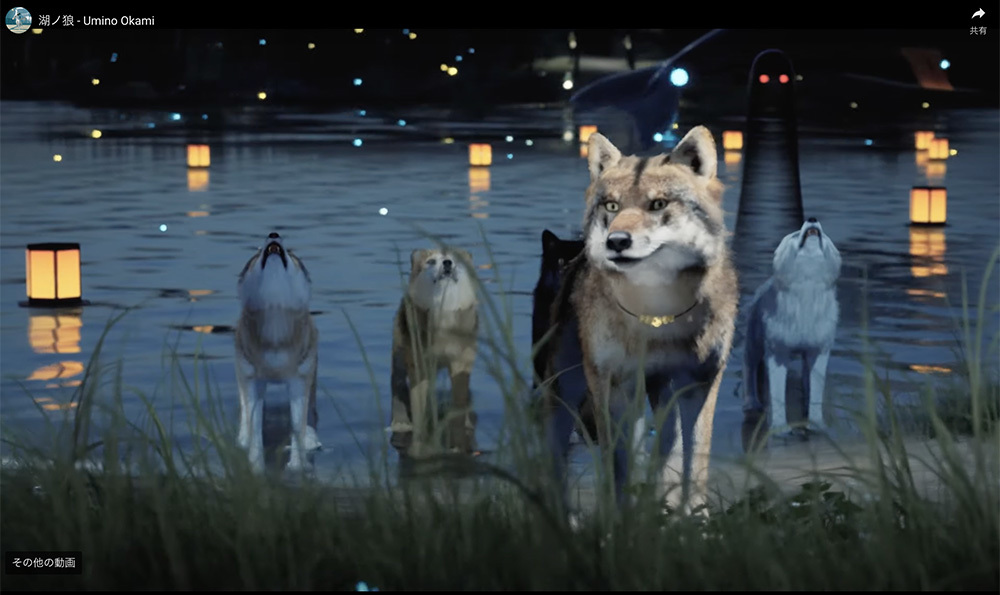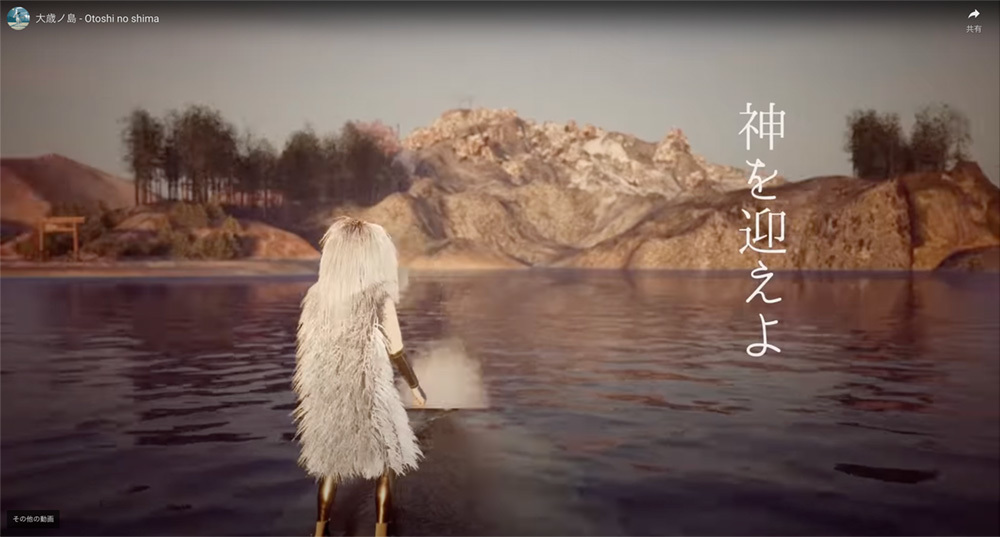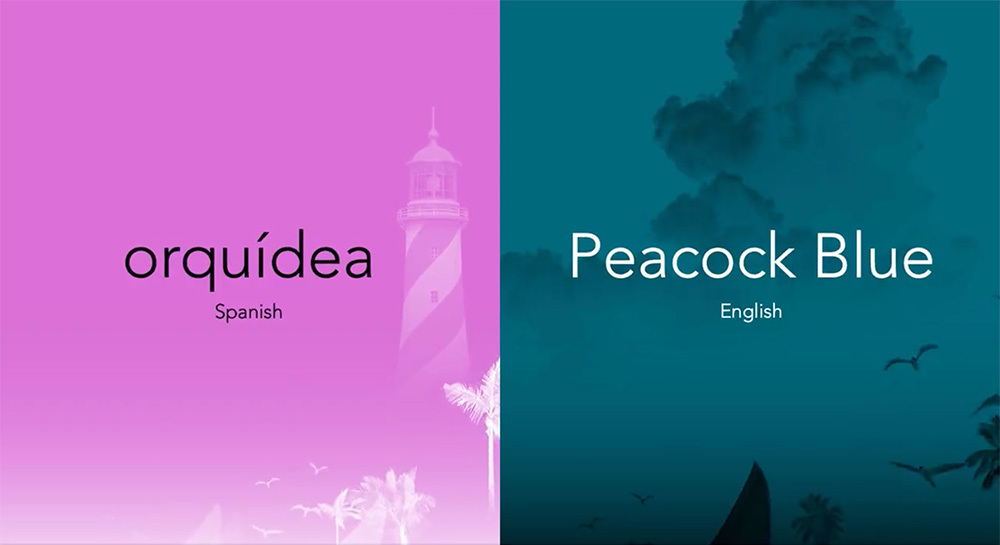Note: This website was automatically translated, so some terms or nuances may not be completely accurate.
In an era where AI is flattening technology, where does the "core" of creativity lie?

Mamoru Shikano
Tohoku University of Art and Design

Ryosuke Ono
Dentsu Inc.
What happens when the creators of Dentsu Inc., armed with planning skills, graphic design skills, copywriting skills, production skills, and more, master cutting-edge technology?
"dentsu prototyping hub" is a workshop hosted by Dentsu Inc.'s creative technologists. To address the diversifying challenges of clients, each session invites leading experts in cutting-edge digital tools as instructors, creating a space for learning.
In the first part, we asked Mamoru Kano, who taught at the "Unreal Engine School," to introduce the 3D game development environment "Unreal Engine" (*) and share his thoughts on the works created by Dentsu Inc.'s creators.
This time, we delve deeper as Ryunosuke Ono, who operates the dentsu prototyping hub, interviews him about the future of creative × technology and advertising expression!
※Unreal Engine
https://www.unrealengine.com/ja/
A platform for 3D game development provided by Epic Games. It is fundamentally free for anyone to use and is not only employed in the development of numerous hit games worldwide but is also gaining attention as a tool for creating interactive 3D content beyond gaming. For production, it offers access to various paid and free "assets" (material content such as objects and character models).
<Table of Contents>
▼How Vast, High-Quality Assets Drive Technological Leveling
▼What Defines the "Core of Creativity" in the AI Era?
▼How Will Unreal Engine Transform Advertising?
▼Mr. Kano's Creative Philosophy: "Curiosity" and "Play"
Massive, High-Quality Assets Drive Technological Leveling
Axe:Following Part 1, we continue our discussion with Mr. Shikano about Unreal Engine (UE)! Regarding the speed of creativity in UE, I think the ability to use vast, high-quality assets plays a significant role. On the other hand, there's also the perspective that "you should create all original materials yourself." How do you view this point, Mr. Shikano?
Shikano: I used to firmly believe that "the world you see should be filled with things you created yourself." But my perspective has shifted recently. While it depends on the project, I increasingly find it better to allocate more time and resources to the story, message, and research, rather than building every single element of the world from scratch myself. For example, when shooting a live-action film, you go outside and shoot at a location you think is good, right? You don't need to create everything that's already there yourself.
Axe: Combining existing assets is actually a fundamental concept in programming. Rarely does anyone code from scratch; everyone uses GitHub with that sense of "standing on the shoulders of giants." But I too had this idea in my head about visual expression: "The scenery before your eyes should be built from scratch."
Kanō: Back in the day, tools like Word and PowerPoint weren't accessible to everyone, but now they're ubiquitous and used daily by many. Similarly, tools like UE are becoming more accessible to those without specialized knowledge, thanks to the abundance of assets and advancements in AI. It's essentially the flattening of technology.
Axe: Using assets, the Dentsu Inc. students were all shocked that they could create such professional-looking 3D work. Because of that, their intention to "continue using UE in the future" was also very high.
Shikano: I once made a wolf game called "Lake Wolf." I found a really high-quality wolf asset on the Marketplace and tried to make it swim underwater. But when it slowly entered the water, it froze. I debugged it extensively without success. That's when I thought, "Since someone made this asset, I should contact them."
Then, almost immediately, the asset creator contacted me with a solution and thanked me for finding the bug. It was an experience where the asset creator and the game creator worked together to improve the work. I felt, "Ah, this is the kind of era we're in now." My recent game projects have had almost no staff, and the end credits list show a ton of assets (laughs).

https://www.zugakousaku.com/okami
Axe: So what happened on GitHub is happening in UE too. It's less about working with staff right next to you and more about this feeling of creating together with everyone around the world.
Shikano: Not just in games, but by loosely connecting with other individual developers, we can now create works on a scale that would have been impossible for a single person just a short time ago. In that sense, the feeling that you have to create everything from scratch yourself, including the visuals, has faded.
What is the "core of creativity" demanded in the AI era?
Axe: People who are good at or enjoy making assets create assets, while those who want to use them to make games create games. That kind of ecosystem is taking shape.
Shikano: However, this "using assets" might actually be a preparatory stage. The means of preparing materials will likely be largely replaced by AI-generated content. You type a prompt like "I want a forest," and a forest is generated. Then you give instructions like "Make it more Nordic" or "Give it a Japanese aesthetic," and the forest evolves step by step. Even so, even in that scenario, usage will likely be restricted due to copyright issues, and there will always be people who insist on creating their own assets and visuals. Still, the creative development process itself is poised for significant change.
Axe: I see... The pace of change is faster than I imagined! As assets become more abundant and AI advances, replacing areas traditionally handled by human hands, I feel we're entering an era where we'll constantly ask, "Where is the core of creativity?"
Shikano: Back in the day, if you wanted a forest stage, you'd handcraft each tree individually. Now, anyone can find tree or forest assets, combine them, and create one. Next, we'll reach the stage where you just tell AI to make it. I teach design at Tohoku University of Art and Design, and we really need to seriously delve into what the essence of design and creativity is, and what we should be teaching going forward.
Axe: While the value of "anyone being able to do it" exists, ultimately, those who understand the mechanisms of creating from scratch will likely be the ones who can best utilize assets and AI. So, that core value might not change. Personally, I want to learn the core aspects of "how these assets are made," then acquire assets created by predecessors. I'd then tune textures or parameters as needed to achieve the expression I desire.
Shikano: When it comes to where human creativity lies, "creating realistic humans" is the highest difficulty level even in the CG world. But now, the latest version of UE has a framework called "MetaHuman," and due to the flattening of technology, you can create something up to a certain level without specialized knowledge.
Given that, I think professional stylists might actually create better results than CG designers. They can bypass complex CG techniques and focus entirely on hairstyles, makeup, and such. By removing the technological barriers through assets and AI, we'll see more and more collaborations focused on that remaining "more essential creative work."
How will Unreal Engine transform advertising?
Axe: We're currently promoting UE within Dentsu Inc. What applications do you envision for UE in the advertising industry?
Kanō: An obvious possibility is increased use for creating motion graphics (※1), which are already common in TV programs and music videos. UE is reportedly planning to implement "Project Avalanche," a feature dedicated to motion graphics. If realized, this would combine UE's existing powerful 3D capabilities, UI, and programming tools, significantly expanding its potential.
Additionally, I expect virtual production (※2) to become more common in commercial production, an area where UE is already actively used on set.
※1 Motion Graphics =
A technique that adds motion and sound to static graphics like text and illustrations. In today's video-dominated era, demand is rising across all fields, from music videos to commercials. Created using video production tools like Adobe After Effects.
※2 Virtual Production =
A technique where 3DCG background footage is projected onto large LED displays, and actors or objects are placed in front for simultaneous filming and compositing. Widely used not only in commercials but also in major Hollywood films.
Axe: Real-time processing that reflects changes instantly is crucial for virtual production too, right?
Kano: I agree. Also, while product placement ads are already common, as an evolution of that, placing "objects that can transform in real time while maintaining incredible realism" within the expression could be very useful for advertising.
Axe: What you just described sounds like it could be realized soon. But looking further ahead, do you think more advanced UE could give rise to entirely new forms of advertising expression?
Shikano: I believe visual expression will increasingly become "filter-based" in the future. For example, if I create a video of a stick figure moving, AI will make it commonplace for that stick figure to transform into various characters or expressions based on the filters the viewers possess. Even recently, various filter-like videos have started appearing experimentally. Like live-action footage being converted into anime or CG styles.
The " Runway Gen-2 " tech demo was also shocking. It generates entirely new videos using text or images, and the source image can be anything – it's the "perceiving side" that transforms it. I think the future of this technology will see more ads where the sender and receiver collaborate.
It's not that AI will change all the expression; 50% will be the advertiser delivering the core message of the ad. The remaining 50% will be customized by the recipient's filter. If there are 100 recipients, 100 different expressions could be seen, but the same message would still be conveyed. I think that kind of advertising is possible.
However, to create expressions tailored to specific purposes, I believe we need a bridge to properly convey information to AI. It requires complex instructions that combine images and 3D data appropriately, not just text prompts or source materials. In such cases, real-time 3D tools like UE will likely become even more important.
In the future, perhaps it won't be a game engine operated by creators, but rather a tool for information recipients to receive content directly at their fingertips.
Mr. Shikano's Creative Theory: "Curiosity" and "Play"
Axe: Finally, I'd like to hear about your creative philosophy, Mr. Shikano. Is there anything you consciously focus on when creating your own work?
Shikano: For me, the greatest motivation is curiosity—the desire to know something, to investigate. No matter what I create, I value that initial impulse to "know."
And the resulting archive of what I've researched and learned is what constitutes my work. In other words, I don't research to complete a work; rather, I want to compile what I've researched, so I finish it as a work.
Axe: It's somewhat magazine-like. The means through which you archive what you've researched isn't books or papers, but games and video works.
Kanō: It's a ritualistic act, a way to draw a line under that "I want to know." I once created a video work called "Full Color Bossa." At that time, I became fascinated with "color" and researched it extensively. It started with noticing how many poetic and literary "color names" exist in Japan, leading me to wonder: What names do other countries give to colors? I also thought sensitivity to color might vary by region. What about China? What about Africa? As I researched, it became increasingly interesting.
Based on that research, I created something that randomly displays color names and color codes in a screensaver-like style.
Axe: So the work is output as a result of wanting to know and wanting to research. That's interesting.
Shikano: This applies to client work too. By taking an interest in the client's work and researching it, we learn more about them, deliver that as an outcome, and give back to society. I think it's crucial for creators to be genuinely interested in the client's endeavors. That mindset is something I always want to maintain.
Axe: That's a truly vital element for our work too... What kind of research started "Otoshi no Shima"?
Shikano: I never originally intended to make a game. I felt my longstanding interest in folklore studies gradually connecting, and as I compiled it, I thought it might be interesting to express it as an island.
The entry point was curiosity about how strange New Year's feels. It's just the boundary of an ordinary day, yet why does it make you feel like you've entered a completely different world? What is that one-second difference on New Year's Eve?
This is a personal feeling, but growing older means getting closer to death, which is incredibly terrifying. By reframing it as "entering a new world" or "something auspicious," I wondered if we're turning the most frightening thing into the ultimate celebration.
That's how I started tracing the roots of these annually repeated rituals, wondering "What exactly does 'auspicious' or 'inauspicious' mean?" Through this exploration, I learned the origins of various "auspicious" beliefs. Take the history of salmon fishing, for example. The act of taking salmon lives to survive became transformed into rich celebratory traditions through folk tales and legends like "ancestors returning as spirits" or "it's already decided who will catch that salmon."
The fear of steadily approaching death, the guilt of taking a salmon's life—how these feelings are soothed within daily life, intertwined with the local culture, reveals the true essence of Japan.

https://www.zugakousaku.com/otoshi
Axe: I find it fascinating that instead of conveying those research findings through books or similar mediums, they're released to the world transformed into "play" through Mr. Shikano.
Kano: Exactly. "Play" is my biggest theme right now. Some say play existed before culture itself for humans—I believe it's fundamental to our essence. When considering motivation, concepts like "playable" or "playfulness" might be incredibly important for society today.
Axe: Hearing you today made me realize how much Dentsu Inc.'s creative domain has expanded. We're no longer just an advertising company, yet our core purpose – "positively moving people's emotions" – remains unwavering. We're now focused on extending that value beyond advertising.
To transform the value and messages our clients hold into "experiences" and "play" that move people emotionally, we want to keep adopting new tools. I found this discussion incredibly inspiring. Thank you!
Was this article helpful?
Newsletter registration is here
We select and publish important news every day
For inquiries about this article
Back Numbers
Author

Mamoru Shikano
Tohoku University of Art and Design
Department of Visual Media, Faculty of Design Engineering
Professor
Professor, Department of Visual Media, Faculty of Design Engineering, Tohoku University of Art & Design. Founding member of WOW Inc. (currently Advisor). Engages in expressions integrating software development and computer graphics, handling visual design across diverse fields from commercial video to installations and software development. Has presented numerous spatial exhibition-type video works at domestic and international exhibitions and museums. In recent years, has focused on design education, conducting research on the utilization of real-time 3DCG while delivering numerous lectures for universities and companies.

Ryosuke Ono
Dentsu Inc.
Customer Experience Creative Center
Creative Technologist
Born in Hyogo Prefecture. Currently training in planning and designing technology-integrated experiences. I enjoy electronics projects. My passion for making things began when my grandfather saw a craft I made as a child and exclaimed, "Ryō-kun is a child prodigy!!" which made me very happy. Past awards include the Gold Prize in the "Thinking Man's Clay Sculpture Contest" (Hyogo Prefecture). (Around third grade)





